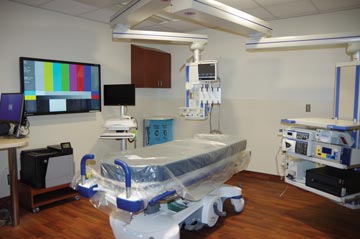Keeping up with the pace of ever-changing surgical video technology isn't easy. Here to help you make sense of it all is Keith W. Mignault, senior medical equipment planner in the healthcare unit at IMEG Corp., a design and engineering consulting firm that builds and modernizes ambulatory surgery centers, hospital outpatient departments and acute-care facilities across the country. Here are the highlights of our chat with him, edited lightly for length and clarity.
Q Many of our readers have yet to upgrade from HD to 4K, and now 8K technology is emerging. What's 8K's status?
A It will be trending in the next 5 years. I certainly wouldn't want to build a new facility that wasn't 8K-upgradable. If you're in the early design phases of a new facility or a modernizing project, you need to project and predict what technology will be out there when the project is almost complete, which could be a couple of years from now. You obviously want to buy the equipment at the very end of the project so you'll have the latest devices. Being routed for 8K is important so that anything that comes into the room will be able to function at its native resolution. You'd never want to tell a physician that you're downscaling the image from the best resolution it could be. When 8K finally arrives, you want to just have to buy some new displays and make an easy upgrade by a plug and play with blade cards.
Q With 8K on the horizon, does that mean that 4K technology will soon be obsolete?
A Not at all. Even though 4K has been on the market for several years and is kind of the standard, some of the imaging machines, microscopes and other devices haven't caught up and are still not 4K. Because some of these systems and devices have been kind of slow to roll out into the surgical marketplace, 4K will be both the current- and next-generation technology for a few years. The imaging systems and microscopes will be 4K soon. Beware of systems that claim to have a 4K routing system but really are only a 4K monitor that has 4 1K images going to it. That kind of setup basically gives you the image quality of the HDTV in your home.
Q What else is happening as ORs have higher resolutions available to them?
A A lot of technology trends at the moment are geared toward tying everything together, which is really more important than choosing between 8K or 4K. As your OR gets more equipment and you hit 4K, now what? That's where it gets interesting. You have the ability to layer one software system over another, and map a procedure based on this integrated information. A couple companies have created virtual surgical planning systems that connect all the software to the OR devices, then set up the mappings and trackings of what needs to be done and when — before the procedure begins. The software takes the raw images from the scans, enhances them, then does the marking and positioning to build the case so surgeons know exactly what they'll be doing in advance. This creates quicker and cleaner surgeries that are a win-win-win because they're better for the patients, OR teams and facility administrators.
.svg?sfvrsn=be606e78_3)


.svg?sfvrsn=56b2f850_5)